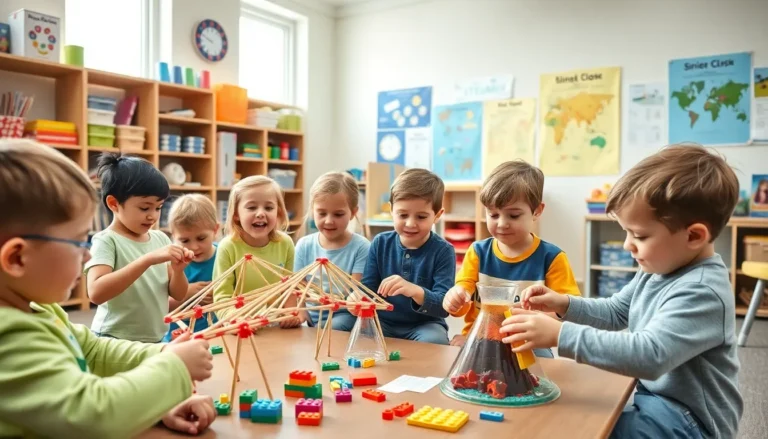Table of Contents
ToggleFostering and adoption, two terms often thrown around interchangeably like they’re the same cup of tea. But hold on. If you think these words are just different labels on the same jar, you’re in for a surprise. While both play pivotal roles in caring for children in the system, each comes with its own unique flavor and purpose. Perhaps you’ve pondered what it truly means to foster a child instead of adopting one? Or maybe you’re wrestling with the decision between the two? Fear not. Immerse as we unravel the nuances, differences, and insights that set these critical paths apart, all while keeping it informative and a bit chuckle-worthy.
Understanding Fostering

Definition of Foster Care
Foster care serves as a temporary placement for children who cannot live with their birth families. Think of it as a safe landing spot where kids can stay until their next big adventure, whether that’s reuniting with their families or finding a new, permanent home. Foster parents step in to provide love, support, and structure during what can often be a confusing time for these little ones.
Purpose of Fostering
The primary aim of fostering is to ensure the child’s well-being and safety. Fostering lets children experience a family life that is nurturing and supportive, which often provides stability until a more permanent solution is arranged. In many cases, it acts as a bridge, supporting kids as they navigate the challenging waters of life.
Duration of Fostering Arrangements
Fostering arrangements can last days, months, or sometimes even years. Essentially, fostering is not a lifelong commitment but rather a flexible option that adjusts as the child’s needs change. This makes fostering a unique experience, as it varies significantly from one situation to another.
Who Can Be a Foster Parent?
Becoming a foster parent isn’t about fitting into a specific mold. Almost anyone can step up to the plate. Different states have their own requirements, but generally, prospective foster parents need to be over the age of 21, pass background checks, and prove they can provide a safe and loving environment. Single individuals, couples, and even families can foster. The point is to create a family-like atmosphere to nurture the children entrusted to their care.
Understanding Adoption
Definition of Adoption
Adoption is the legal process through which a person or a couple becomes the permanent, legal parents of a child. Unlike fostering, where the goal may involve reunification with a birth family, adoption seals the deal, offering a new family and a new beginning for the child. Essentially, it’s forever.
Purpose of Adoption
The purpose of adoption is to provide a loving, stable, and permanent home for a child. It gives the child a sense of belonging, security, and the chance to forge strong family bonds. Adoption not only changes the child’s life but transforms the adoptive family as well, creating lasting connections.
Process of Adoption
The adoption process can be lengthy. It usually includes several steps: thorough background checks, home studies, and court approvals. Potential parents often undergo training and assessments to ensure they’re fully prepared to welcome a new member into their family. While it may seem extensive, remember: it’s all about finding the right match for the child.
Legal Implications of Adoption
Adoption comes with a host of legal implications that go deeper than a simple grocery store purchase. Once a child is adopted, all legal ties to their birth parents are severed, and the adoptive parents assume full responsibility. This includes making decisions about education, medical care, and other crucial life aspects. It’s a commitment that carries immense emotional and legal weight, solidifying the bond and responsibility for the child’s future.
Key Differences Between Fostering and Adoption
Emotional Considerations in Fostering vs. Adoption
Emotionally, fostering and adoption provide different experiences. Foster parents often have to grapple with the uncertainty of the child’s future, which can evoke feelings of loss or attachment pangs when children leave. In contrast, adoptive parents officially become the child’s forever family, typically enjoying stable emotional security and a sense of completion in their bonds.
Choosing Between Fostering and Adoption
Choosing between fostering and adoption is a significant decision laden with personal reflections and family dynamics. Some families might feel called to the temporary nature of fostering, wanting to provide a safe haven for children in crisis. Others may desire the permanence and emotional fulfillment of adoption. It’s essential to assess each family’s situation, resources, and emotional readiness.Whichever path one chooses, it’s important to realize both come with opportunities to profoundly impact a child’s life.






